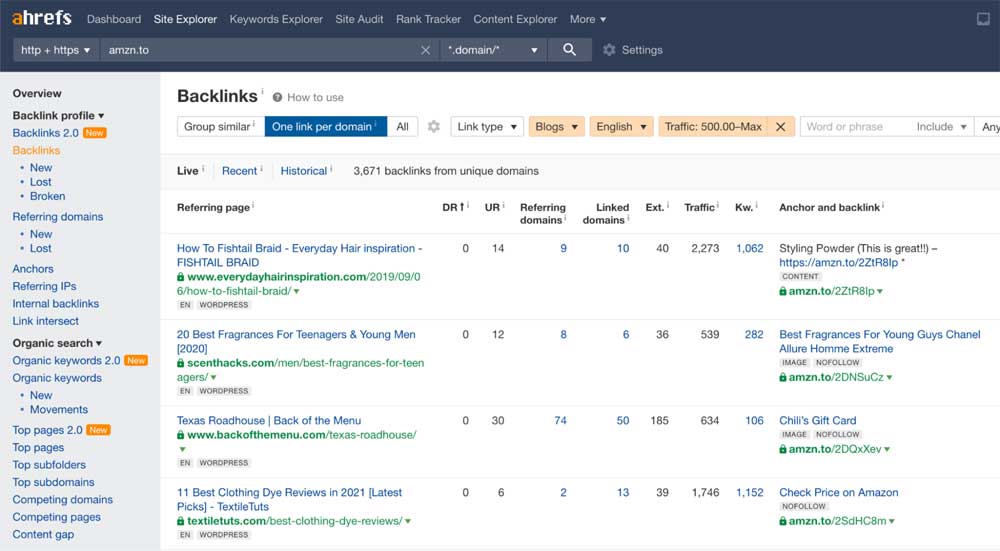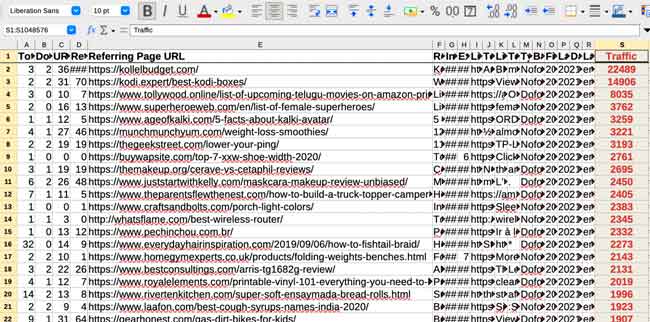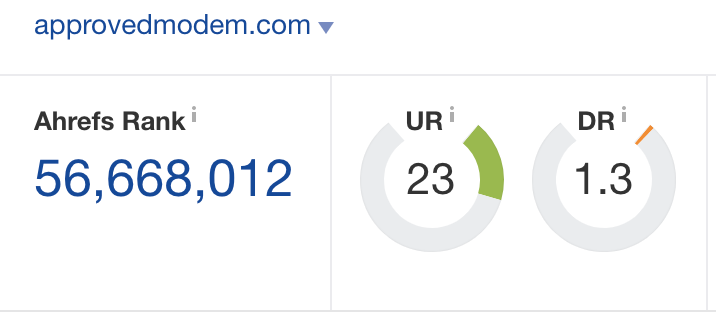Finding profitable affiliate opportunities to promote is no easy task. Most of the time, it's really hard to break through when you’re new in the game.
This is because most affiliate niches are very competitive due to the high number of affiliates competing for the same clicks.
But for those who know where to look, I have some good news: by using a simple trick I teach my clients, anyone can unearth affiliate niches and products that offer high profitability and low competition.
Key Takeaways
But first, let’s take a deeper look at affiliate marketing.
Disclosure: Although I receive affiliate compensation at no additional cost to you to support this site that compensation in no way influences my recommendations, which are strictly informed by my 10+ years of online business experience consulting for clients large and small. My aim is to always recommend tools that offer the best return for your investment (for more details, read my Affiliate Disclosure).
What Are Affiliate Marketing Programs And How Do They Work?
Affiliate marketing programs are a way for online marketers to make money by promoting products on their blogs.
The idea is that if someone buys something after clicking through your link, you earn a commission from the sale.
There's no need to worry about inventory or customer service because all of those costly and time-consuming things fall on the merchant.
You simply join an affiliate program with good terms like Amazon Associates and then promote any relevant offers you find there.
As long as people click through one of your tracking links when buying anything on Amazon, they will reward you by depositing a cut of the sale into your bank account.
And this is no small business opportunity, the affiliate marketing industry is expected to be worth $12 billion by the end of 2022.
What's The Problem With Affiliate Marketing Today?
In one word: competition.
Even affiliate niches that used to be easy for new bloggers are now saturated, and it's hard to get a foothold in the space when there are so many other marketers trying to do the same thing you're doing.
This does not mean that affiliate marketing is mature and only reserved for the few lucky bloggers that entered the game early on. Far from it! What it means is that bloggers have to become much more savvy in how you go about finding opportunities.
How To Find Profitable Affiliate Opportunities In Any Niche With Little Competition
Here’s your secret weapon: every time every single affiliate on the planet drives traffic to a product site, they leave digital “breadcrumbs” behind. And if you know how to spot these breadcrumbs, all you have to do then is to follow the trail.
Below I will show you the exact steps that you need to execute to find those digital breadcrumbs and then follow them to take you to highly profitable-low competition affiliate products you can promote.
For brevity, I’m going to limit the scope in this article to products sold on Amazon and in the English language only. However, keep in mind that this technique works on any niche, any product and any language.
Step 1. Let’s begin with the mother of all affiliate programs
Amazon, like all other affiliate programs, needs to be able to track each and every affiliate transaction. This is so they can attribute the saleto its rightful owner. In order to do that, they make use of a very specific domain name: amzn.to.
Anyone who applies to Amazon Associates will have to add affiliate links to their websites that point to that domain in order for their sale to be tracked, for example, amzn.to/2C2pwgY.
So, your first step is to find every possible Amazon affiliate link that begins with “amzn.to.” Then out of the millions of available links, your task is to find only those links that are the most profitable with the least competition.
Step 2. Reverse engineer Amazon affiliate links
For step 2, you’ll need to sign up with one of the top SEO reverse engineering tools out there. I’m using Ahrefs for this article, but Semrush or Moz will work just as well.
These tools do pretty much the same thing Google does every day: they crawl millions and millions of websites for keywords and backlinks and then store and index this treasure trove of information in their databases.
Your job now is to search for every single site that’s linking to Amazon Associates through their amzn.to domain.
Here are the results from Ahrefs:

To eliminate low-traffic pages and foreign languages, I’ve set up the Ahrefs filters to only search for results in English and for pages that have more than 500 visitors a month.
Next, your job is to get rid of highly competitive products and niches by sorting the results in increasing order of Domain Rating to eliminate all heavy hitters from the playing field.
Step 3. Time to fire up your spreadsheet
Once you have a nice list like the one above, you’ll need to export it as a CSV file and import it into your favorite spreadsheet program (the first 1,000 records will be sufficient):

Now, ignore all columns except for Referring Page URL and Traffic, and then sort the entire sheet by Traffic in decreasing order.
By focusing on high-traffic pages, you’re ensuring high profitability, and, since all of the entries on the above spreadsheet contain sites with low domain ratings, you’re making sure that your search is limited to low competition niches.
Step 4. Find the shells that have pearls in them
Now comes the fun part! Go through the Referring Page URL rows from top to bottom and identify potential areas of interest.
For example, if you’re knowledgeable about hardware, then focus on those sites that refer to hardware in their URL. If you’re into cosmetics, then choose those.
For this article, I’ve selected something that I’m knowledgeable about, modems, but don’t be influenced by the nerdy nature of my choice — this technique works for ANY niche and ANY product that Amazon sells, from the highly specialized to the totally mundane:

Step 5. You just hit the jackpot!
And behold… we just found an affiliate page from a low-competition site that’s driving 672 potentially revenue-generating clicks per month to a specific Amazon product page, which is over 8,000 clicks per year!
In addition to driving a ton of sales to Amazon, imagine the email list of leads you could build from this traffic... and this is just from a single page.
But the story gets even better: since this site has low competition, it follows that this page is ranking for a keyword with a low difficulty score (in this case, Ahrefs tells us that the page’s parent keyword is “mediacom compatible modems”).
Let’s now punch this keyword into the Keywords Explorer feature:

Fantastic! And it keeps getting better: this affiliate site has a domain rating of… drumroll please… just 1.3!

AND, almost 100% of the traffic comes from the U.S., the largest Amazon market in the world by far:

Wow, when it comes to affiliate marketing cool tricks, this is a perfect storm of perfection!

And you’re done.
There you have it. A purely data-driven methodology to find total affiliate gems in any niche!
Wrapping Things Up
Oftentimes, the advice in the affiliate world is to focus on niches that you’re passionate about, or that are highly sought after, or that pay high commissions, or that have a low keyword difficulty score and reasonable search volume, and so on and so forth.
Although there’s truth to all of the above, at the end of the day unless you look at the full picture from a data-driven point of view like we just did, you’ll be more than likely shooting in the dark.
So, you can be an expert in a competitive niche and find it next to impossible to gain any traction, OR you could use this technique to find nothing but pots of gold, one right after the other!



